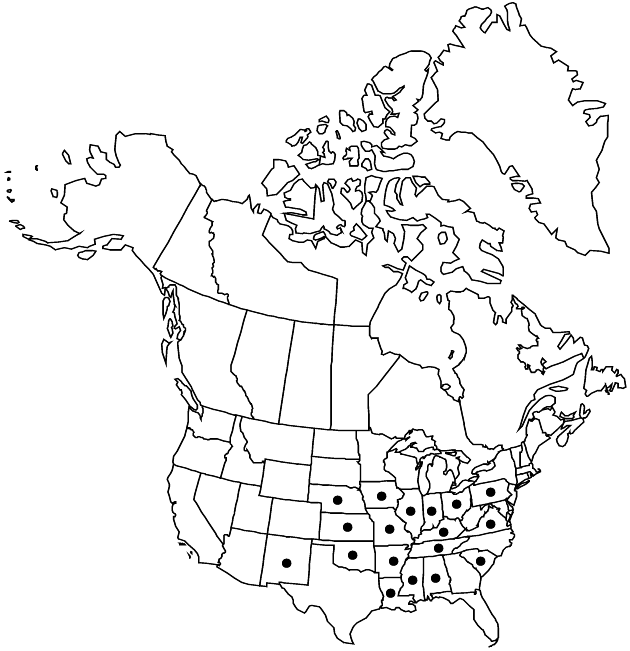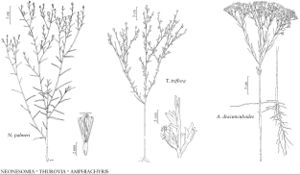Difference between revisions of "Amphiachyris dracunculoides"
Trans. Amer. Philos. Soc., n. s. 7: 313. 1840.
Common names: Prairie broomweed
Basionym: Brachyris dracunculoides de Candolle Mém. Soc. Phys. Genève 7: 265. 1836
Synonyms: Gutierrezia dracunculoides (de Candolle) S. F. Blake Xanthocephalum amoenum var. intermedium Shinners
Treatment appears in FNA Volume 20. Treatment on page 88.
FNA>Volume Importer |
FNA>Volume Importer |
||
| Line 8: | Line 8: | ||
}} | }} | ||
|common_names=Prairie broomweed | |common_names=Prairie broomweed | ||
| − | |basionyms={{Treatment/ID/ | + | |basionyms={{Treatment/ID/Basionym |
|name=Brachyris dracunculoides | |name=Brachyris dracunculoides | ||
|authority=de Candolle | |authority=de Candolle | ||
| + | |publication_title=Mém. Soc. Phys. Genève | ||
| + | |publication_place=7: 265. 1836 | ||
}} | }} | ||
|synonyms={{Treatment/ID/Synonym | |synonyms={{Treatment/ID/Synonym | ||
| Line 57: | Line 59: | ||
|publication year=1840 | |publication year=1840 | ||
|special status= | |special status= | ||
| − | |source xml=https://jpend@bitbucket.org/aafc-mbb/fna-data-curation.git/src/ | + | |source xml=https://jpend@bitbucket.org/aafc-mbb/fna-data-curation.git/src/f6b125a955440c0872999024f038d74684f65921/coarse_grained_fna_xml/V19-20-21/V20_169.xml |
|tribe=Asteraceae tribe Astereae | |tribe=Asteraceae tribe Astereae | ||
|genus=Amphiachyris | |genus=Amphiachyris | ||
Revision as of 18:41, 24 September 2019
Plants 30–100(–200) cm. Primary stems 0.3–1(–2) mm diam. Leaf blades narrowly to broadly lanceolate, 5–60 × 0.5–6 mm. Heads in crowded corymbiform arrays. Phyllaries 2–3 × 1–2 mm. Receptacles deeply pitted, glabrous. Cypselae 1.2–2.2 mm, 7–9-ribbed, short-setulose. 2n = 10 (rarely 8).
Phenology: Flowering Jul–Nov.
Habitat: Calcareous, clay, or sandy soils, disturbed habitats
Elevation: 0–500 m
Distribution

Ala., Ark., Ill., Ind., Iowa, Kans., Ky., La., Miss., Mo., Nebr., N.Mex., Okla., Ohio, Pa., S.C., Tenn., Va.
Discussion
Amphiachyris dracunculoides is common in the south-central states, often in relatively large populations.
Selected References
None.
Lower Taxa
None.
